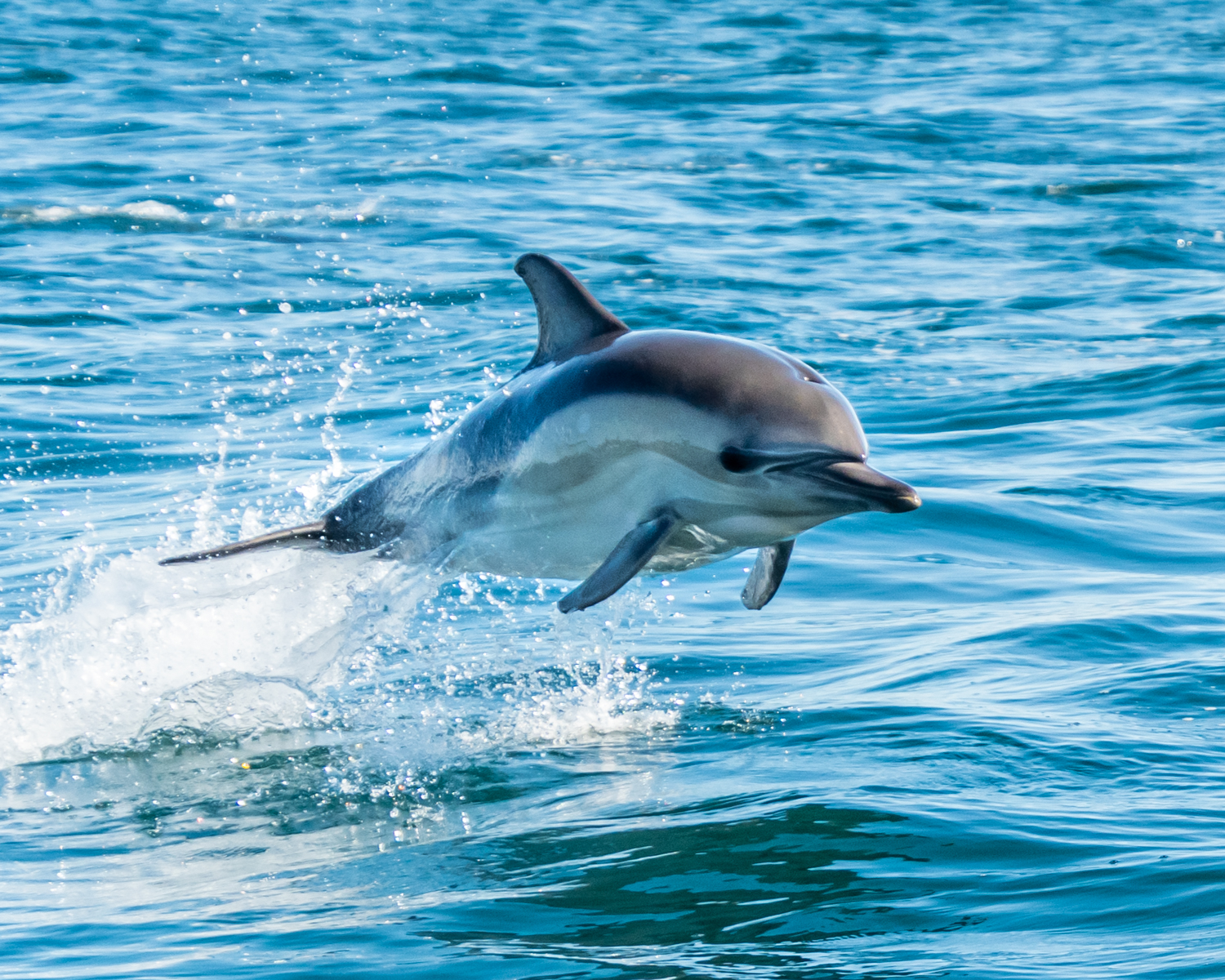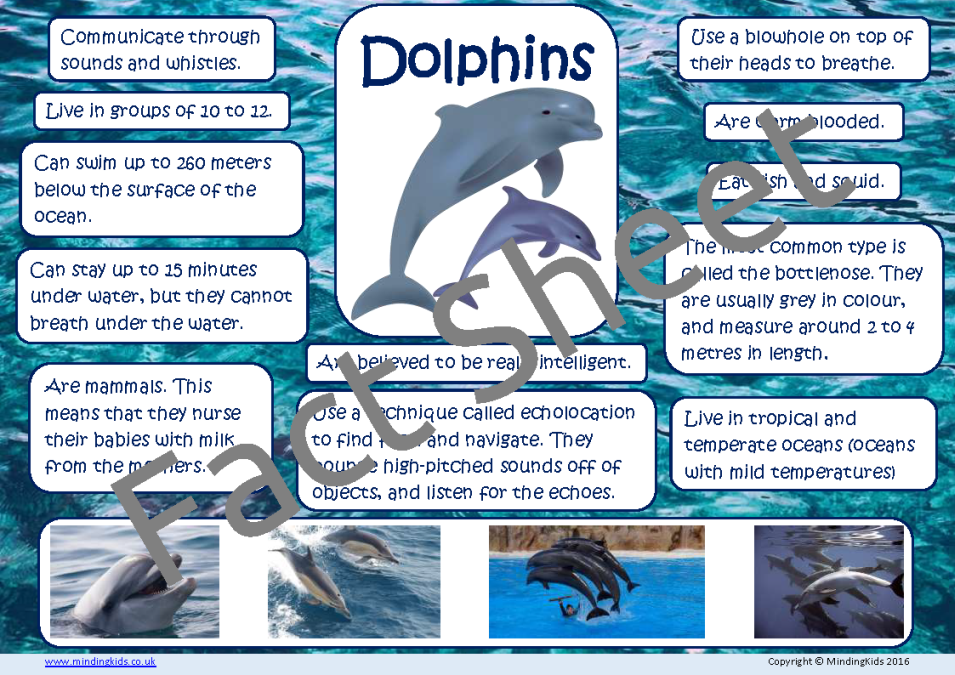Remarkable Dolphin Facts That Explain Their Amazing Navigation Skills
Remarkable Dolphin Facts That Explain Their Amazing Navigation Skills
Blog Article
Unveiling Dolphin Details: Nature's Intelligent Marine Mammals
Dolphins, frequently related to as among the sea's most intelligent occupants, display a remarkable range of behaviors and social frameworks that require closer examination. With over 40 unique types, these aquatic mammals not just demonstrate amazing communication skills and complicated social communications but additionally have innovative cognitive capacities that challenge our understanding of non-human knowledge. Dolphin Facts. As we check out the subtleties of their lives, one should think about how these attributes influence their interactions with human beings and the pushing importance of conservation. What effects do these understandings hold for our connection with these extraordinary animals?
Dolphin Species Diversity
Dolphins are a diverse team of marine mammals coming from the family Delphinidae, which encompasses over 40 distinctive species. This household includes widely known varieties such as the common bottlenose dolphin (Tursiops truncatus), the orca or awesome whale (Orcinus whale), and the risso's dolphin (Grampus griseus) Each types exhibits unique physical attributes, actions, and adaptations that allow them to flourish in numerous marine settings.
Dolphin varieties vary significantly in size, ranging from the tiny Maui's dolphin (Cephalorhynchus hectori) at about 1.2 meters to the whale, which can get to sizes of up to 9 meters. Their coloration additionally varies, with some types presenting striking patterns that assist with camouflage or social signaling. Additionally, dolphins inhabit diverse environments, from seaside areas and estuaries to the open ocean, showcasing their adaptability.
Research study right into dolphin species variety highlights the eco-friendly significance of these creatures, as they play crucial functions in aquatic ecological communities. Comprehending the different types is important for conservation initiatives, as several encounter dangers from habitat loss, environment, and contamination modification, requiring targeted security procedures to guarantee their survival.
Social Frameworks and Actions
The complexity of dolphin types is mirrored in their complex social frameworks and behaviors. Dolphins are understood for their very social nature, usually forming groups called skins, which can vary from a couple of individuals to over a hundred. These cases are commonly composed of household members, showcasing a matrilineal framework where females play a main duty in maintaining social bonds and supporting children.

Additionally, some varieties of dolphins, such as whales, show complex social habits that can consist of sub-pods or clans with distinctive cultural methods. These social frameworks are critical for the survival and well-being of dolphin populaces, as they promote interaction, cooperation, and the transmission of understanding across generations. Recognizing these social dynamics is essential for conservation initiatives and the protection of their natural environments.
Communication Techniques
Amongst the various techniques of interaction, dolphins utilize an innovative variety of communication strategies that facilitate social communication and coordination within their shells. These techniques include vocalizations, body language, and echolocation, each offering unique functions in their social communications.
Dolphins create a vast array of clicks, whistles, and pulsed audios, which work as their main singing communication. Each dolphin has an unique trademark whistle, similar to a name, that allows individuals to determine one an additional also in huge groups. These articulations can communicate numerous messages, such as alerting others to threat or working with group movements during hunting.
In addition to vocalizations, body movement plays an important role in dolphin communication. Dolphin poses, such as jumping, spinning, and even subtle shifts in orientation, share emotional states and intentions. Hostile screens might discourage rivals, while playful habits can improve social bonds - Dolphin Facts.
Echolocation, a biological sonar system, additional help in navigation and searching. By emitting acoustic waves and interpreting the returning mirrors, dolphins can locate prey and barriers successfully, demonstrating their exceptional versatility in complicated aquatic settings. Collectively, these interaction methods highlight the complex social lives of dolphins, highlighting their intelligence in navigating their underwater globe.

Knowledge and Problem Addressing
Identified for their sophisticated interaction skills, dolphins also the original source display impressive knowledge and analytic abilities that even more improve their social interactions. Their cognitive abilities are shown by their capacity to learn complicated jobs, understand abstract ideas, and adjust to numerous environmental obstacles. Study has actually shown that dolphins can resolve complex challenges, demonstrating not just their cognitive adaptability yet likewise their capacity for preparation and insight.
Dolphins typically participate in cooperative searching methods, showcasing their ability to work as a cohesive device. This synergy requires advanced analytic skills, as they need to examine their atmosphere, determine potential target, and collaborate their activities to achieve a common objective. In addition, dolphins have been observed using devices, such as aquatic sponges, to shield their noes while foraging on the sea flooring, further exemplifying their cutting-edge analytical capacities.

Human-Dolphin Interactions
Human-dolphin communications have actually mesmerized fanatics and scientists alike, highlighting the complex partnership between these intelligent marine mammals and people. From ancient times, dolphins have actually been portrayed in art and mythology, signifying harmony and knowledge (Dolphin Facts). Modern interactions vary from clinical research study and conservation initiatives to recreational activities like dolphin swimming and viewing with dolphins
Study has shown that dolphins have advanced social frameworks and interaction abilities, which promote their interactions with people. These encounters usually cultivate psychological links, with numerous people reporting feelings of pleasure and empathy during such experiences. However, it is important to approach these interactions with care, as human activities can disrupt dolphin habits and environments.
Conservation campaigns progressively concentrate on advertising liable communications, guaranteeing that human enthusiasm does not compromise dolphin well-being. Education programs intend to increase recognition regarding the environmental relevance of dolphins, emphasizing the requirement for sustainable practices.
Final Thought
In recap, dolphins exemplify remarkable intelligence and versatility within diverse marine environments. Their intricate social structures, progressed interaction approaches, and analytic capacities highlight the intricacy of their habits. Human communications with these marine animals highlight the importance of accountable conservation efforts to guarantee their survival and the defense of their habitats. Proceeded study and recognition are crucial for promoting a deeper understanding of dolphins and advertising their welfare in a significantly endangered ecosystem.
Dolphin species vary considerably in size, ranging from the small Maui's dolphin (Cephalorhynchus hectori) at about 1.2 meters to wikipedia reference the whale, which can reach lengths of up to 9 meters. Dolphins show a selection of social interactions, including grooming and physical contact, which offer to reinforce connections and establish pecking orders.
Identified for their advanced interaction skills, dolphins also display amazing knowledge and problem-solving abilities that even more improve their social communications. Modern communications range from scientific research and conservation efforts to entertainment activities like dolphin swimming and enjoying with dolphins.
Research study has shown that dolphins possess advanced social frameworks and interaction abilities, which promote their interactions with human beings.
Report this page